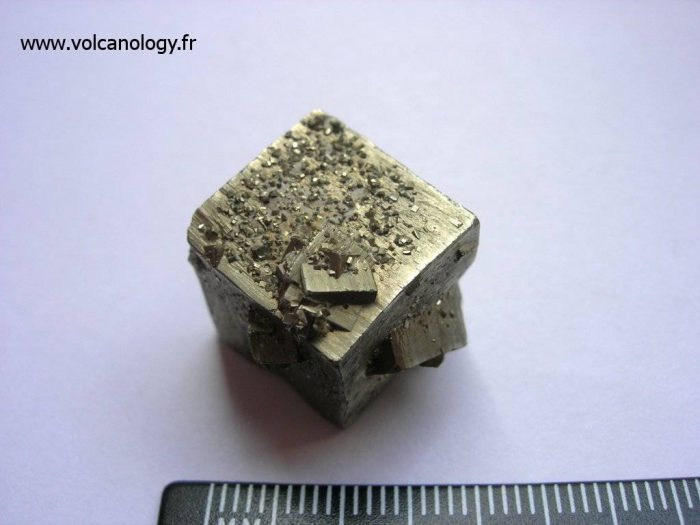Pyrite
Sulphide group
Formule chimique :
FeS2
Système cristallin :
Cubic
Etymologie :
From the Greek word pyros, which means fire, because of the sparks that fly when it is struck with steel.
Dureté :
6 – 6.5
Densité :
5
Propriétés physiques :
Metallic sheen. Pale yellow colour. Opaque. Sometimes conchoidal fracture. Poor cleavage (001).
Propriétés chimiques :
Pyrite is insoluble in hydrochloric acid (HCl) and slightly soluble in nitric acid (HNO3).
Formule chimique :
FeS2
Habitus :
In cubic, octahedral and dodecahedral crystals. Frequent mica of which the most common is the iron cross. Massive. In concretion.
Gîtologie :
Pyrite is a ubiquitous mineral in all types of metal deposits and sedimentary rocks.
Determination :
Pyrite is very easy to identify because of its light yellow colour. It can be confused with gold (denser and more malleable), chalcopyrite (more yellow) and arsenopyrite (which contains arsenic).
Utilisation :
No major use
Pyrite is found throughout the world and in many contexts. It is common in metallic deposits. Beautiful crystals are found in Brosso and Traversella (Italy), Quiruvilca (Peru), in the Austrian Alps and in Buckland Monachorum (England).

Pyrite en cubes maclée (Espagne)
Leave a Reply